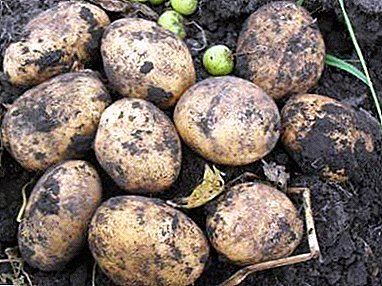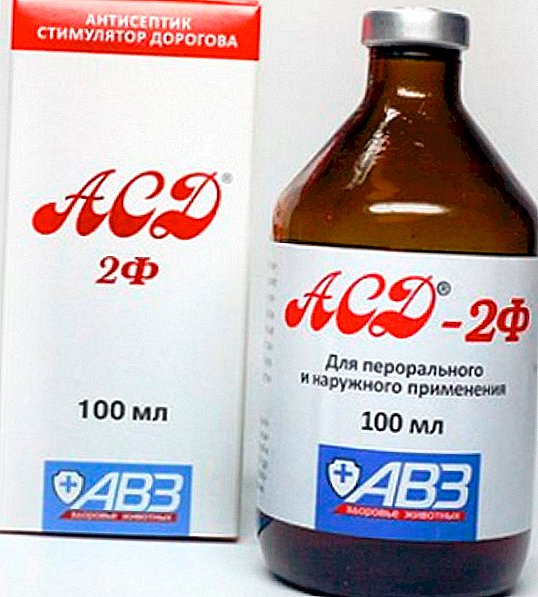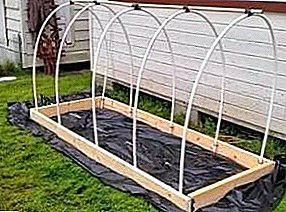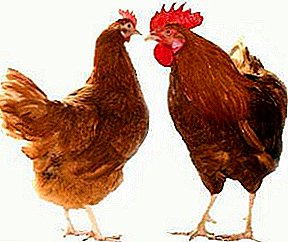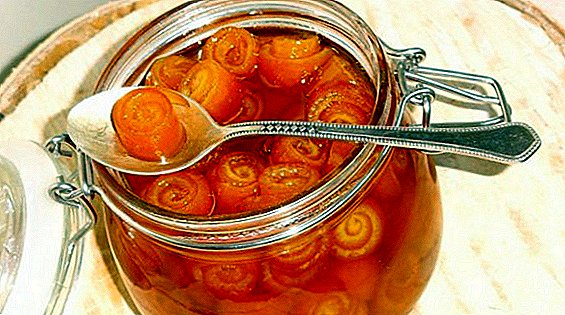 Every year the number of equipment used by farmers in their business activities increases. Automation and mechanization of labor on farms facilitates labor, makes the conditions of animals better and ultimately reduces the cost of the resulting products. These devices include feed dispensers. Feed distributors have been created that are used on all types of livestock farms, including pig-breeding and cattle farms.
Every year the number of equipment used by farmers in their business activities increases. Automation and mechanization of labor on farms facilitates labor, makes the conditions of animals better and ultimately reduces the cost of the resulting products. These devices include feed dispensers. Feed distributors have been created that are used on all types of livestock farms, including pig-breeding and cattle farms.
Purpose and principle of action
A feed dispenser is a special device whose task is to receive, transport and dispense feeds and their mixtures. Distributors can feed green fodder, haylage, silage, unground haylage and fodder mixtures, both on one or both sides.  The requirements for feed dispensers:
The requirements for feed dispensers:
- ensuring uniformity, timeliness and accuracy in the distribution of feed (feed time not more than 30 minutes per room);
- the dosing of the distribution of fodder for each animal or their group (deviation from the norm is allowed for concentrated feed - 5%, for stalk animals - 15%);
- fodder contamination is not allowed (return loss of no more than 1%, irretrievable losses are not allowed);
- stratification of feed in mixtures is not allowed;
- devices must be safety for animals, including and electrical.
Types of feeders
There is a huge number of distributors, it is determined by the conditions of their work, for different types and sizes of farms, for different types of animals, with varying degrees of automation, etc. 
Classification of feed dispensers:
- by type of movement - stationary and mobile;
- by the method of distribution - one- and two-sided;
- on loading capacity - one - and biaxial.
By way of moving
Distributors for feed used on farms can be:
- stationary - installed inside the farm, directly above or inside the feeders, and in one way or another distribute the feed from the bunker, where feed or mixture is prepared in containers. Stationary feed dispensers differ in the type of forage transferring agent, for mechanical ones - conveyor, hydraulic, pneumatic and gravity feed. Conveyor - they are distinguished by the type of mechanism, belt, scraper or chain, for the drive usually use an electric motor;
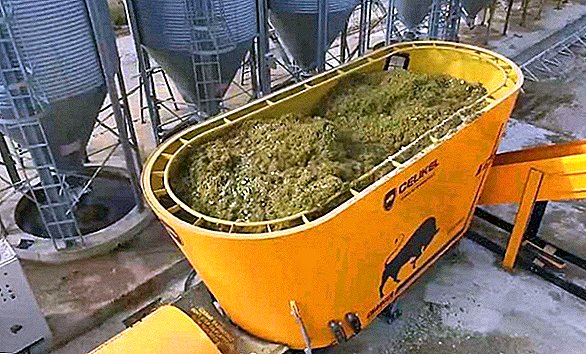
- mobile - they can be loaded with food anywhere, deliver it to the site and distribute it there over the feeders. There are mounted on tractor trailers or carts (drive to the distribution mechanism is transmitted from the tractor) or self-propelled, placed on the frame of the car or fully autonomous, often electrically operated.

By type of distribution
Feed dispensers, which are used on cattle farms, can feed food in the feeders either on one side or on both sides.
We also advise you to learn how to make a feed cutter with your own hands.
Load capacity
The load separation is used for mobile distributors and describes how much forage a given distributor can transport.  As a rule, this is determined by the number of axles of the tractor trailers and the carrying capacity of the automobile chassis on which the feeder is installed. The average loading capacity of a biaxial feed feeder is 3.5-4.2 tons, uniaxial 1.1-3.0 tons.
As a rule, this is determined by the number of axles of the tractor trailers and the carrying capacity of the automobile chassis on which the feeder is installed. The average loading capacity of a biaxial feed feeder is 3.5-4.2 tons, uniaxial 1.1-3.0 tons.
Specifications and description of popular models
When choosing a feeder, its characteristics should be considered. They are common to all types (performance, feed feed rate, working bunker volume) and specific.  For stationary distributors it is the speed of the tape and the power consumption. For mobile - it is transported weight, speed of movement during transportation and distribution, turning radius, overall dimensions. Popular models are of both types.
For stationary distributors it is the speed of the tape and the power consumption. For mobile - it is transported weight, speed of movement during transportation and distribution, turning radius, overall dimensions. Popular models are of both types.
Stationary
Stationary feed dispensers are used either on large farms with feed shops where you need to maximally automate and optimize the feed supply, or on small ones where it is impossible to use mobile dispensers due to the dimensions of the room and feeders.
Did you know? A cow weighing 450 kg per day should eat up to 17 kg of feed per day, considering only dry matter, in summer from 35 to 70 kg of feed, depending on milk yield.TVK-80B feed dispenser - tape dispenser for all types of solid feed. It is a chain conveyor belt installed inside the feeder. Tape one, looped, 0.5 m wide

The drive is supplied from the electric motor through a reducer to the circuit, which drives the belt. Forage from the receiving hopper is evenly distributed with a tape along the entire feeder, after which the circuit breaker operates, installed on one of the chain elements.
Its parameters:
- feeding front length - 74 m;
- productivity - 38 t / h;
- serviced livestock - 62;
- electric motor power - 5.5 kW.
 The main advantage of such a feeder is the full automation of the distribution of feed. The most effective use of them in barns adjacent to the feed mill is to avoid overloading the fodder and gas pollution of the premises, provides an optimal microclimate.
The main advantage of such a feeder is the full automation of the distribution of feed. The most effective use of them in barns adjacent to the feed mill is to avoid overloading the fodder and gas pollution of the premises, provides an optimal microclimate.KRS-15 - stationary scraper feeder for dry crushed and juicy stalked feed, such as silage, hay, green mass, and feed mixtures.
Learn about silage harvesting and storage.
 This is an open horizontal conveyor installed on the bottom of the feeder. It consists of two feed channels, parallel to each other and looped together.
This is an open horizontal conveyor installed on the bottom of the feeder. It consists of two feed channels, parallel to each other and looped together.Working part - chain scraper conveyor, is located inside the fence, driven by an electric motor. Forage is fed from a bunker or mobile distributor into the fence and then spreads along the chute by scrapers. The drive shuts off when the first scraper makes a full turn.
Its parameters:
- feeding front length - 40 m;
- productivity - 15 t / h;
- serviced livestock - 180;
- electric motor power - 5.5 kW.
 RK-50 feed dispenser with a belt conveyor located above the manger, feeds inside the farm and distributes the crushed feed.
RK-50 feed dispenser with a belt conveyor located above the manger, feeds inside the farm and distributes the crushed feed.There are two variants of this model - for 100 and 200 heads with one and two conveyors-distributors, respectively.
Its main elements are an inclined conveyor, a transverse conveyor, one to two distributor conveyors and a control unit. Each conveyor has its own electric drive.
Conveyor-distributor - belt conveyor in half the length of the feeder, which moves along the guides, located along the stern passage at a distance of 1600 mm to 2600 mm from the floor.  The stern passage should not be wider than 1.4 m. Driven by a steel cable wound on drums. The speed of movement is governed by the change of gears in the transmitting gearbox, replacing five positions.
The stern passage should not be wider than 1.4 m. Driven by a steel cable wound on drums. The speed of movement is governed by the change of gears in the transmitting gearbox, replacing five positions.
Food enters the receiving container of an inclined conveyor, and from it is fed to a cross conveyor located horizontally in the center above the conveyors-distributors. He sends the feed to the first or second conveyor-dispenser. With the help of a rotary chute, it is sent to the feeder on the right or left of the feed passage.
Its parameters:
- feeding front length - 75 m;
- productivity - 3-30 t / h;
- serviced livestock - 200;
- electric motor power - 9 kW.
Important! The use of electrically driven feeders on cattle farms (both stationary and mobile) reduces noise, helps to avoid harmful exhausts, does not disturb animals, which ultimately makes better conditions for their housing.
Mobile
Mobile feed dispensers can be used on all types of farms, where the dimensional dimensions of the premises allow it. Their advantage is the ability to combine the delivery of feed from the place of storage or harvesting with the distribution of them at the feeders.  These mechanisms can also be used during harvesting as self-unloading vehicles. Mobile distributors-feed mixers are widely used on farms, in their bunkers feed mixing is carried out followed by feeding to cattle feeders.
These mechanisms can also be used during harvesting as self-unloading vehicles. Mobile distributors-feed mixers are widely used on farms, in their bunkers feed mixing is carried out followed by feeding to cattle feeders.
Universal KTU-10 feeder implemented as a tractor trailer, intended for delivery and distribution of hay, silage, root crops, shredded green mass, or mixtures thereof. It is optimized to work with any models of the Belarus tractor.  The dispenser consists of a transverse, unloading conveyor and a block of beaters that rotate in bearings mounted on the sidewalls. The mechanism is actuated through the drive shaft from the tractor's PTO. In addition, the drive is fed to the rear chassis, equipped with hydraulic brakes, controlled from the tractor cab.
The dispenser consists of a transverse, unloading conveyor and a block of beaters that rotate in bearings mounted on the sidewalls. The mechanism is actuated through the drive shaft from the tractor's PTO. In addition, the drive is fed to the rear chassis, equipped with hydraulic brakes, controlled from the tractor cab.
Familiarize yourself with the MT3-892, MT3-1221, Kirovets K-700, Kirovets K-9000, T-170, MT3-80, Vladimirets T-25, MT3 320, MT3 82 and T-30 tractors, which can be used for different types of work.Preliminary adjustments to the rate of dispensing of the feeder are made using the ratchet mechanism. Then, when loading the feeders, the tractor's PTO is connected, the longitudinal conveyor feeds the feed mixture to the beaters, and they send it to the cross conveyor loading the feeders.
 The feed rate is controlled by the speed at which the tractor moves. Distribution of feed can take place on one or both sides, depending on the modification and setting of the dispenser.
The feed rate is controlled by the speed at which the tractor moves. Distribution of feed can take place on one or both sides, depending on the modification and setting of the dispenser.Important! It should be borne in mind that the minimum turning radius of the KTU-10 is not less than 6.5 m, it is not suitable for farms with narrow passages and limited space.The KTU-10 feed dispenser has the following technical characteristics:
- load capacity - 3.5 tons;
- bunker volume - 10 m3;
- productivity - 50 t / h;
- feed rate - 3-25 kg / m (number of steps - 6);
- length - 6175 mm;
- width - 2300 mm;
- height - 2440 mm;
- base - 2.7 m;
- track - 1.6 m;
- power consumption - 12.5 hp
 RMM-5.0 - small-sized feeder, in its functionality similar to KTU-10. However, its dimensions allow using the distributor in rooms with narrow aisles. Prepared for work with T-25 tractors, various models of the Belarus tractor, as well as a DT-20 tractor.
RMM-5.0 - small-sized feeder, in its functionality similar to KTU-10. However, its dimensions allow using the distributor in rooms with narrow aisles. Prepared for work with T-25 tractors, various models of the Belarus tractor, as well as a DT-20 tractor.Technical characteristics of PMM 5.0:
- carrying capacity - 1.75 tons;
- bunker volume - 5 m3;
- productivity - 3-38 t / h;
- feed rate - 0.8-16 kg / m (number of steps - 6);
- length - 5260 mm;
- width - 1870 mm;
- height -1920 mm;
- base - 1 axis;
- track - 1.6 m

Did you know? In the largest mobile feeders, the bunker volume reaches 24 m3, and the carrying capacity is 10 tons.Feed dispenser AKM-9 - multifunctional preparatory dispenser for cooking feed mixtures from haylage, straw, silage, pellets and food additives, designed for a herd of 800 to 2,000 head of cattle.
It combines a mixer equipped with a 2-speed multiplier, a feed mixer and a feed dispenser. In fact, it is a mobile feed workshop, allowing to mix, prepare and distribute feed.  Due to the uniaxial base, ground clearance and size, it is quite maneuverable and has good throughput. It aggregates with class 1.4 tractors, including MTZ-82 and MTZ-80 tractors.
Due to the uniaxial base, ground clearance and size, it is quite maneuverable and has good throughput. It aggregates with class 1.4 tractors, including MTZ-82 and MTZ-80 tractors.
Technical characteristics of AKM-9:
- bunker volume - 9 m3;
- preparation time - up to 25 minutes;
- productivity - 5 - 10 t / h;
- feed rate - 0.8-16 kg / m (number of steps - 6);
- length - 4700 mm;
- width - 2380 mm;
- height - 2550 mm;
- base - 1 axis;
- passage width - 2.7 m;
- angle of rotation - 45 °.

Benefits of using feed dispensers
The use of feeders in the care of cattle gives such advantages:
- reduces the time and labor costs for the distribution of feed, simplifies and speeds up the process of feeding;
- the use of complex preparation feed mixers makes it possible to optimize the preparation of feeds and mixtures and immediately feed them into the feeders;
- the use of stationary feed dispensers allows you to automate the feed supply and thereby optimize the daily ration of animals, which positively affects their growth and productivity;
- the use of mobile distributors allows not only to quickly distribute food, but also to load it in the fields, in storage or production areas and deliver it to farms;
- reduces the cost of the products.
Domestic manufacturers of feeders willingly cooperate with farms and customize the model to specific conditions and customer requirements, which allows them to be used even more efficiently.





